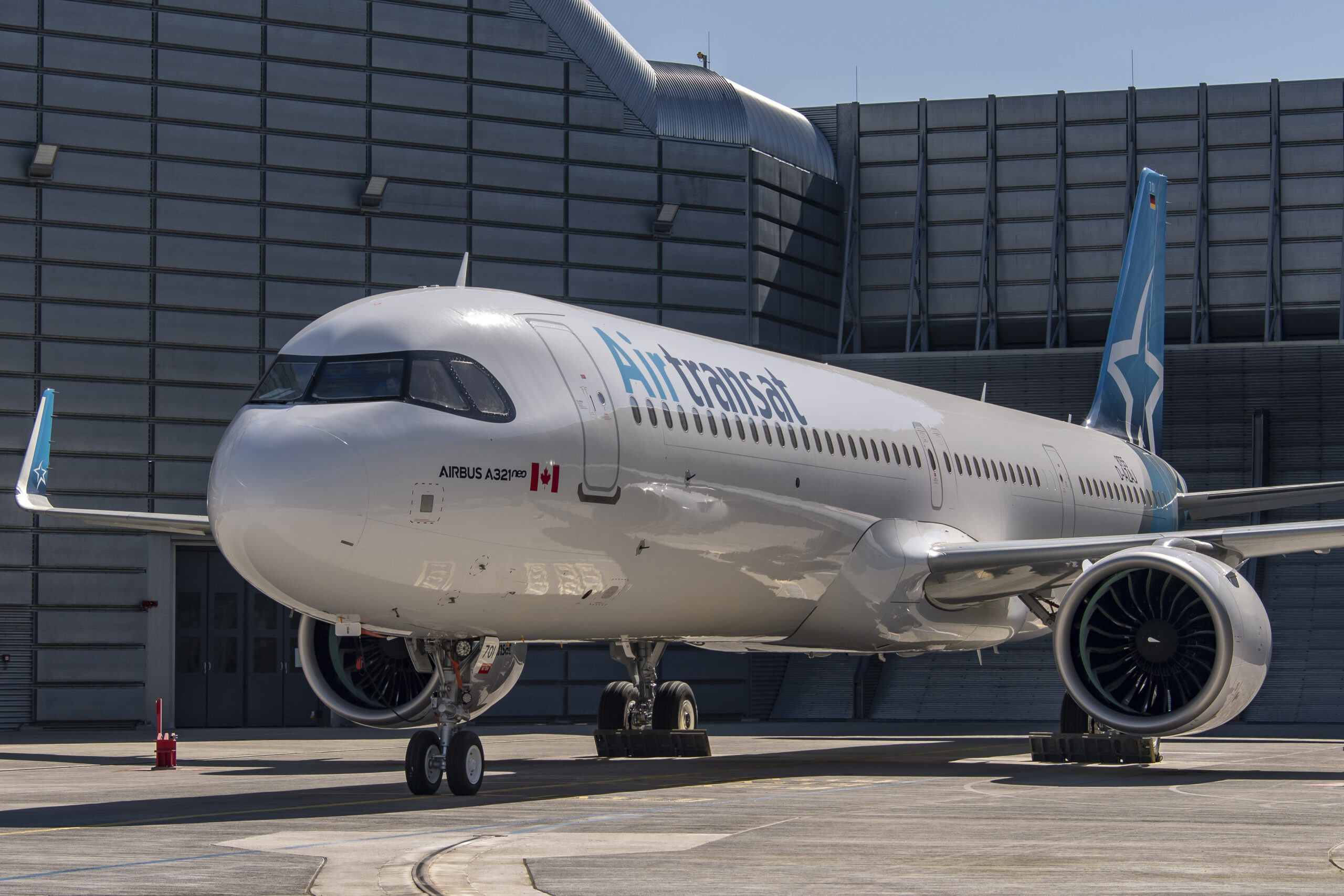What Is It Like to Fly On The New American Airlines Flagship Suite?
A full review of the brand-new Flagship Suite on its inaugural journey from Chicago to Los Angeles
by Chris Sloan
June 6, 2025

The Flagship Suite on the American Airlines Boeing 787-9 offers more comfort with lie-flat seating and can also convert to a chaise lounge position / Photo: Courtesy of American Airlines
This wasn’t just a first flight; it was a strategic maneuver in a broader battle for Chicago’s air travel market. American Airlines launched its all-new 787-9 Dreamliner with Flagship Suites at O’Hare International Airport, where it is the second-largest carrier, following its hometown rival, United Airlines.
The timing of this launch was significant, as American had recently filed a lawsuit against the City of Chicago over the allocation of new gates to United.
While United had previously showcased its new Elevate Polaris seats, American now has actual aircraft in service. This flight was a one-time domestic journey for FAA certification for each tail number, after which the aircraft was scheduled to continue as part of its intended service to London Heathrow later that evening.
American plans to deploy this configuration on high-premium routes, including Philadelphia to London, Philadelphia to Zurich, Dallas to Brisbane, and Dallas to Auckland, with additional routes planned in the future.
This is the first of 30 aircraft scheduled to feature this premium-heavy layout. Currently, four aircraft are in service, with four more expected to arrive this year. This cabin configuration will also be introduced on the 777-300ER, replacing First Class, and on the upcoming A321XLR.
Check-In
I checked in using the American Airlines app and traveled with carry-on luggage only, so I didn’t need to use the Flagship Check-in, despite having Executive Platinum status. TSA PreCheck was efficient, even during the busy morning rush.

Photo: Courtesy of Chris Sloan
After passing through security, I walked through O’Hare’s iconic H and K concourses, which were made famous by the movie Home Alone. I then visited American’s largest Admirals Club in the airport, located above Gate H6.
Although it hasn’t been remodeled to match the new standards seen at Washington DCA or Philadelphia, the club offered a solid breakfast spread, including scrambled eggs, fruit, oatmeal, bagels, and smoked salmon.

Photo: Courtesy of Chris Sloan
Since this wasn’t a Flagship-designated route, I didn’t have access to the Flagship Lounge located directly below the Admirals Club. Access to that space at O’Hare is limited to international Flagship Business and Concierge Key customers, and the airport does not offer Flagship First Dining.
Boarding
Gate K19 featured a light celebratory setup with a few balloons, a poster, and a brief announcement. Overall, the inaugural event felt underwhelming, and American missed an opportunity to showcase the new aircraft in a more memorable way.
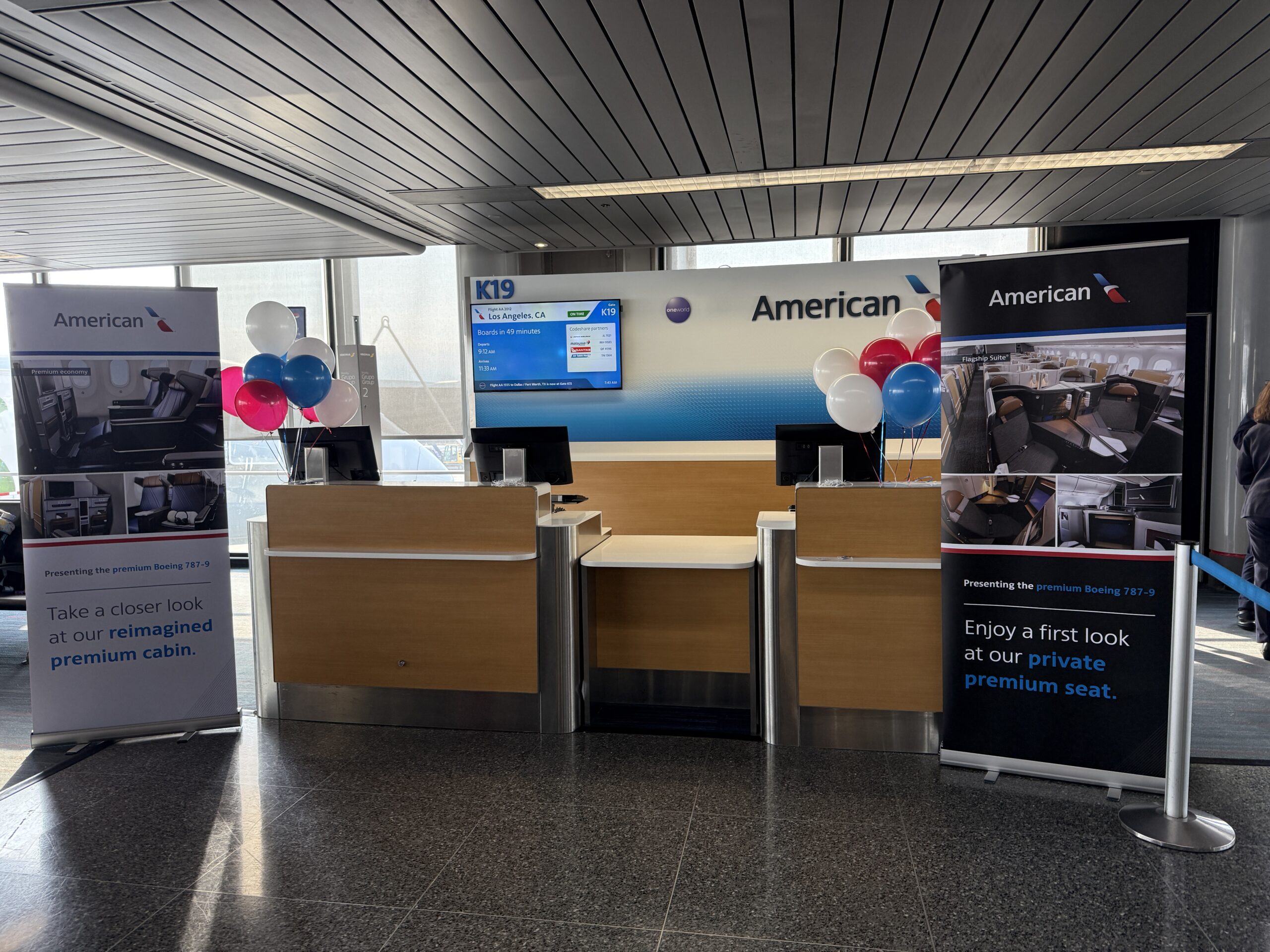
Photo: Courtesy of Chris Sloan
Boarding followed American’s new procedure: Concierge Key members boarded first, followed by Flagship Suite passengers, and then Group 1, which includes Executive Platinum members. I entered through Door 2L and turned right into the forward business cabin.
The Cabin
The new configuration reduces the total seat count from 285 to 244, which represents a 14 percent decrease. However, it significantly increases the capacity for premium seating. Business class expands from 30 to 51 seats, marking a 70 percent increase, while premium economy rises from 21 to 32 seats, resulting in a 52 percent increase. As a result, this aircraft becomes the most premium-dense plane in American’s fleet.

Photo: Courtesy of Chris Sloan
Business class is divided into two cabins: a larger forward cabin with nine rows and a more intimate rear cabin with five rows. I was seated in 1D, one of eight Flagship Suite Preferred seats located at the front of each cabin.
From the moment you step onboard, it’s clear that American is elevating its premium offerings. The Flagship branding is prominently displayed on a black ribbed wall with a backlit “AA Flight Symbol,” creating an elegant and sophisticated atmosphere—a notable improvement from the previous gray and sterile interiors.
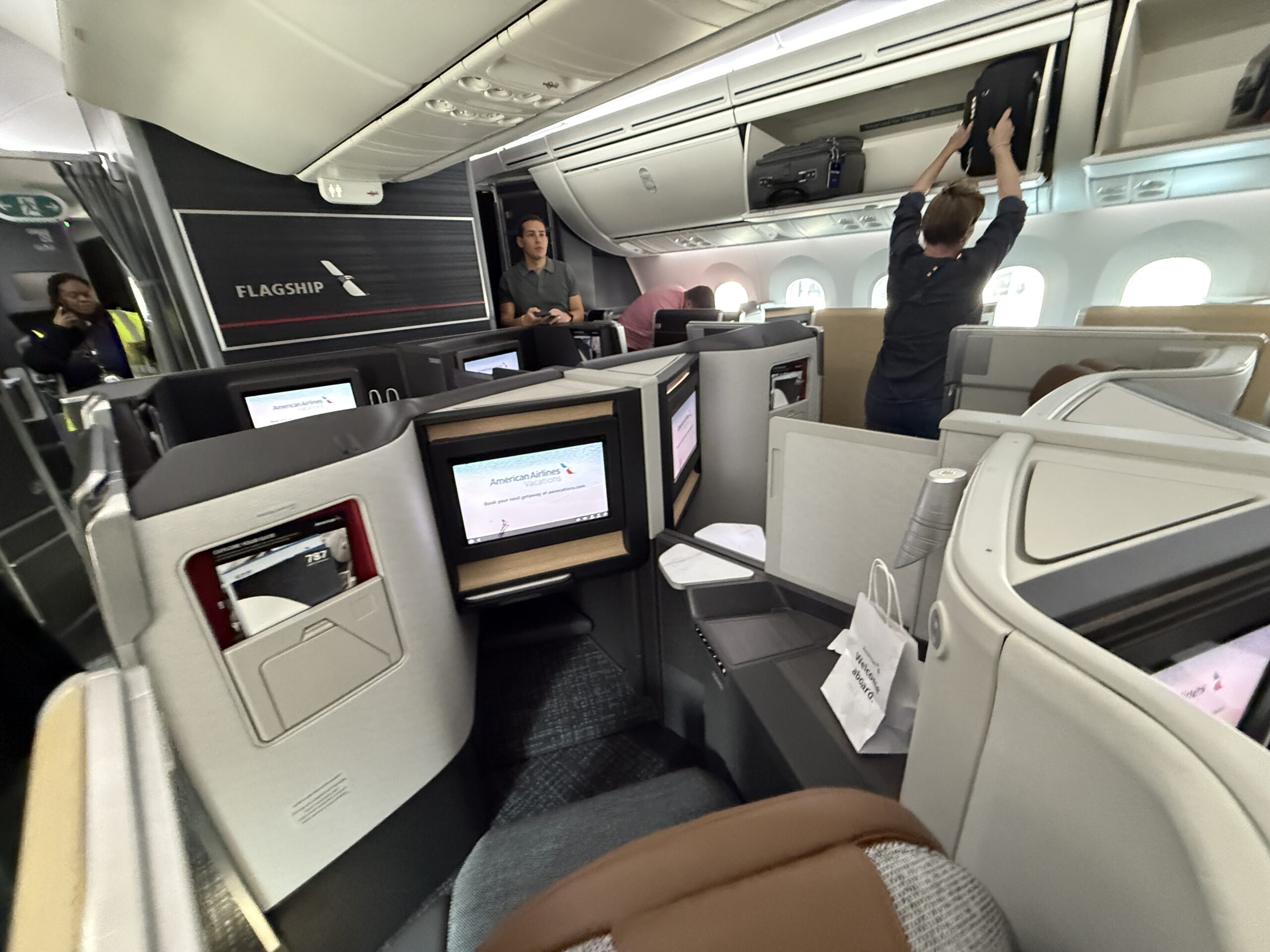
Photo: Courtesy of Chris Sloan
The new cabin has a warmer, brighter ambiance, especially in the standard Flagship Suites, which feature lighter wood tones and white marble accents. In contrast, the Preferred Suites utilize darker materials—such as black marble, brushed aluminum, and deep upholstery. While the Preferred Suites exude a sense of exclusivity, I found the lighter palette of the standard suites to be more inviting overall.
There are four lavatories in the business cabin: one located at L1 behind the cockpit and three more at Doors 2L and 2R. The blue cloud mural felt somewhat cartoonish compared to the otherwise serious suite environment.
The Seat
The Flagship Preferred Suite represents American Airlines’ new top-tier business class experience. These front-row seats have no seat directly in front of them, providing 19% more bed space and 42 percent more living area compared to standard Flagship Suites. At 5’6″, I appreciated the extra space, especially when lying flat. The bed felt spacious at the legs, and overall comfort was excellent.

Photo: Courtesy of Chris Sloan
The seat reclines into a chaise lounge position, allowing you to sit upright while stretched out. A patented second seatbelt secures you in this configuration. Additionally, there’s a floating headrest that adjusts to multiple positions and serves as lumbar support when in lounge mode.

Photo: Courtesy of Chris Sloan
Storage is a standout feature in these suites, with four main compartments: one for shoes, a slot for a tablet, a place for a water bottle, and a vanity-style amenity cabinet complete with a mirror and jewelry tray. A white marble drink table near the console contrasts with the dark suite aesthetic but is quite convenient.
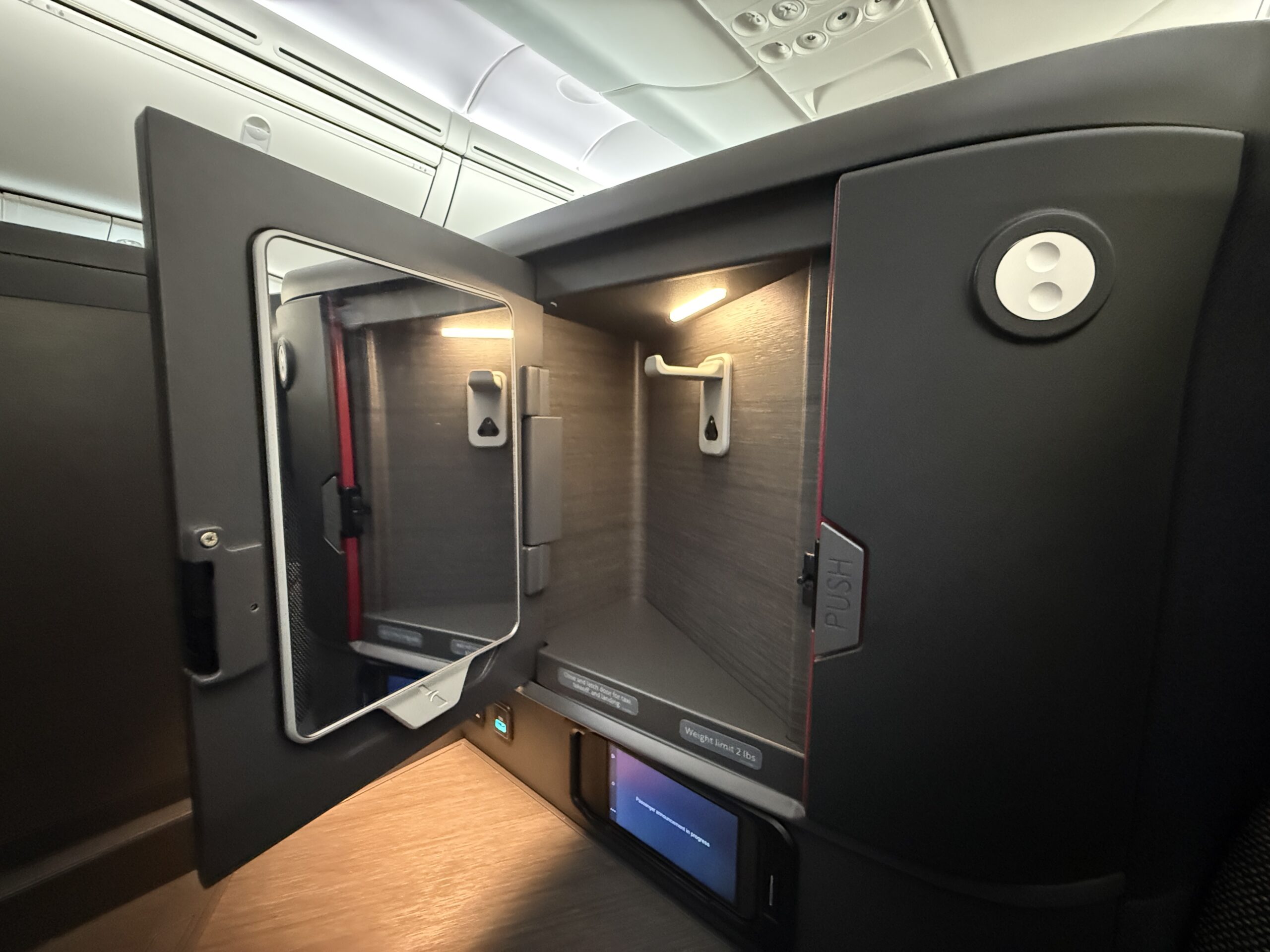
Photo: Courtesy of Chris Sloan
Lighting in the suite is fully customizable with four settings and features an elegant sconce. Seat controls are intuitive, and a laminated quick guide explains all the new features.
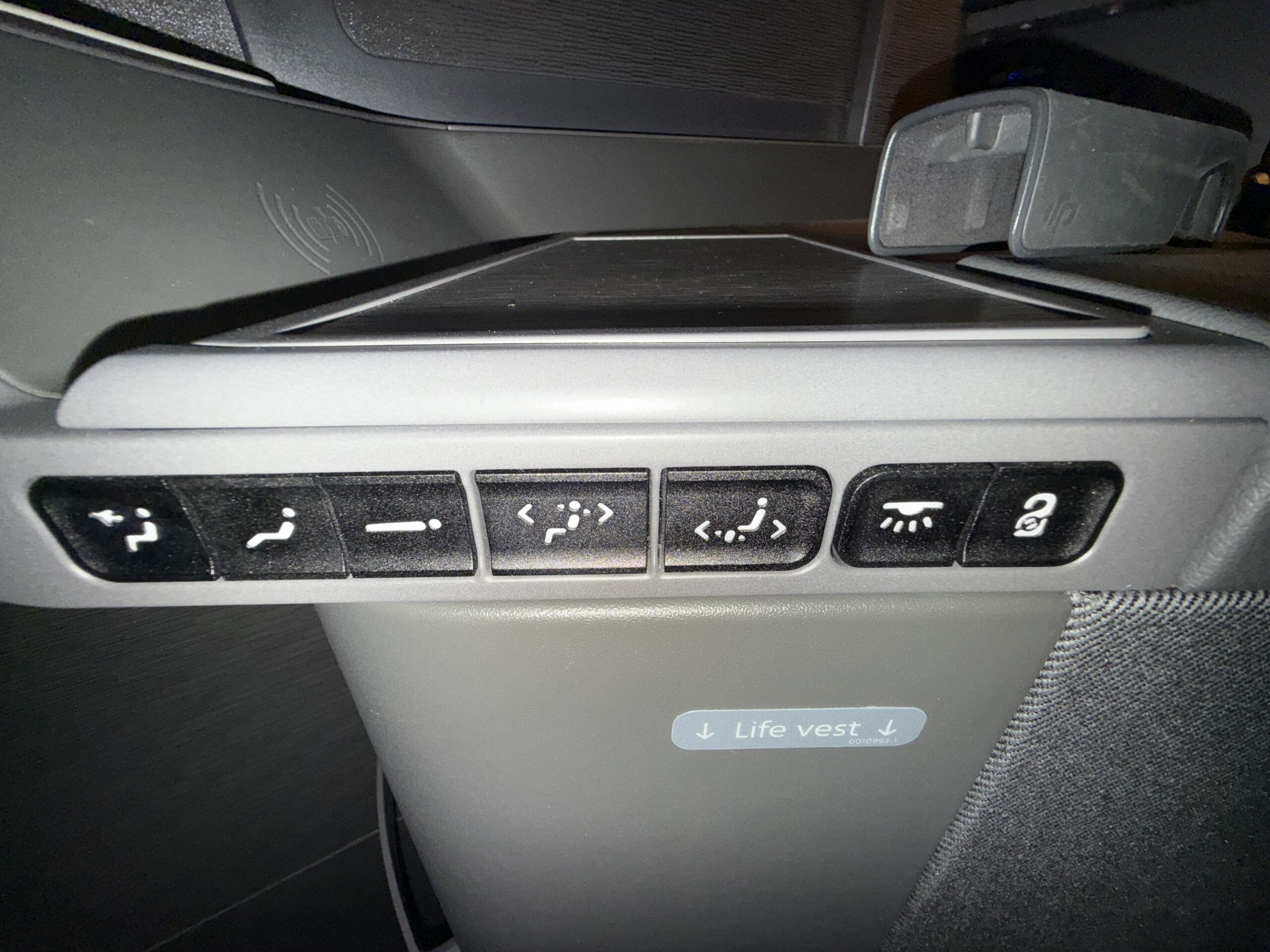
Photo: Courtesy of Chris Sloan
Privacy doors surround each suite; however, they have not yet been certified for in-flight use. I received an email the night before my flight notifying me of this and awarding 5,000 AAdvantage miles as compensation.
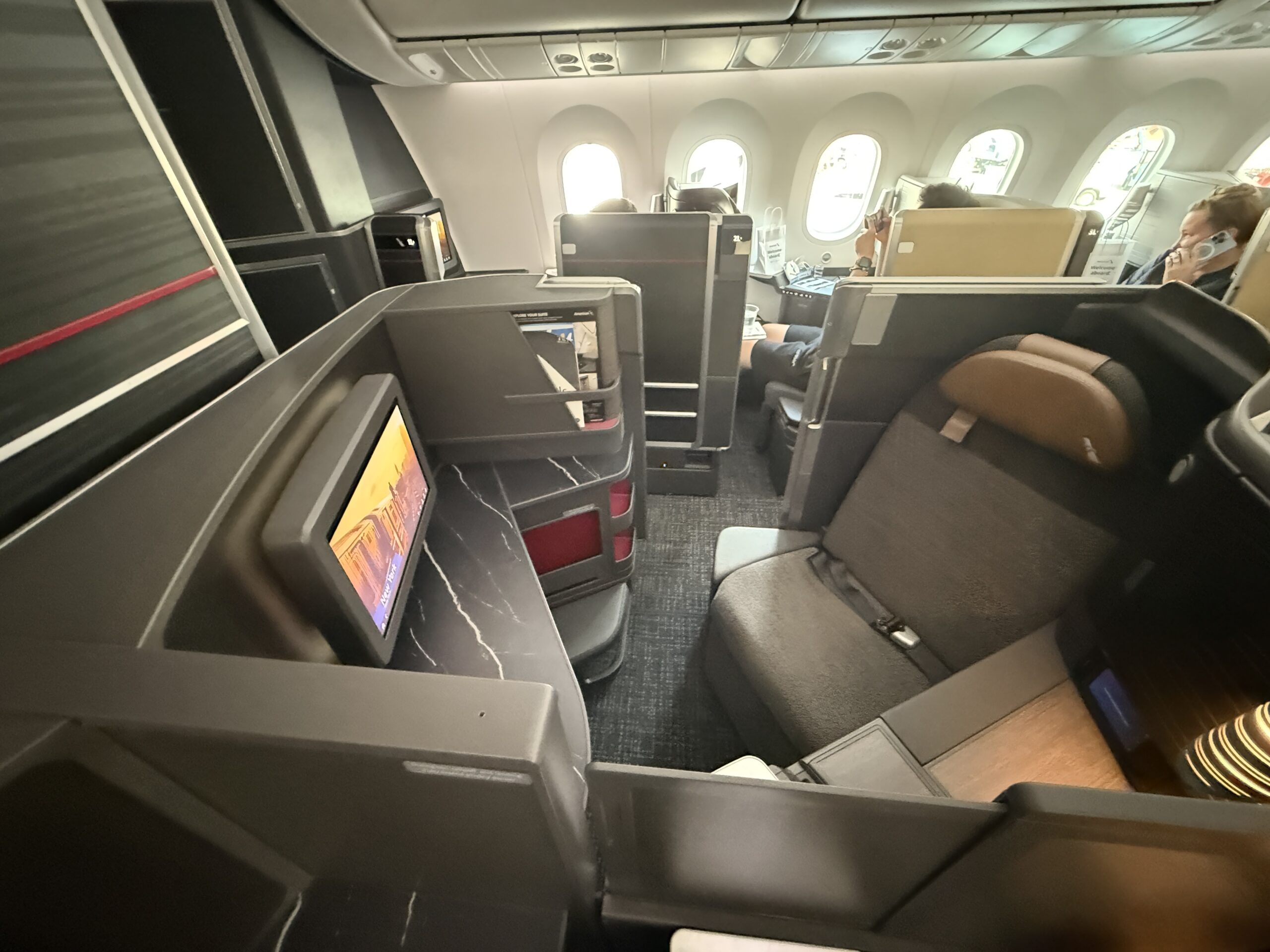
Photo: Courtesy of Chris Sloan
One downside of the high suite walls is that they block the window views for the center seats, making the cabin feel darker and more enclosed, particularly with the darker Preferred décor.
Amenities exclusive to Flagship Preferred on true Flagship routes—including memory foam mattress pads, larger amenity kits, pajamas, blankets, and pillows—were unfortunately not provided on this flight.
Food and Beverage
There were no menus or pre-order options available, and the meal service followed the standard domestic format.
About 40 minutes after takeoff, I was served a Monterey Jack omelet with chicken sausage, seasoned potatoes, and fruit. The dish was flavorful and well-prepared.

Photo: Courtesy of Chris Sloan
I paired it with a glass of Cabernet. Additionally, there was a swag bag waiting at my seat, which included stickers, a commemorative postcard, and a “Remove Before Flying” tag.
Unfortunately, the newly introduced snack station, located on the left side at the rear of the forward business cabin, was empty. This felt like a missed opportunity for American Airlines to surprise and delight passengers during the product launch.
Inflight Entertainment
The 17.5-inch 4K screen is sharp, and the interface is fast and responsive. However, a notable downside is the thick bezel around the screen, which gives it a less premium appearance compared to flush-mounted alternatives.
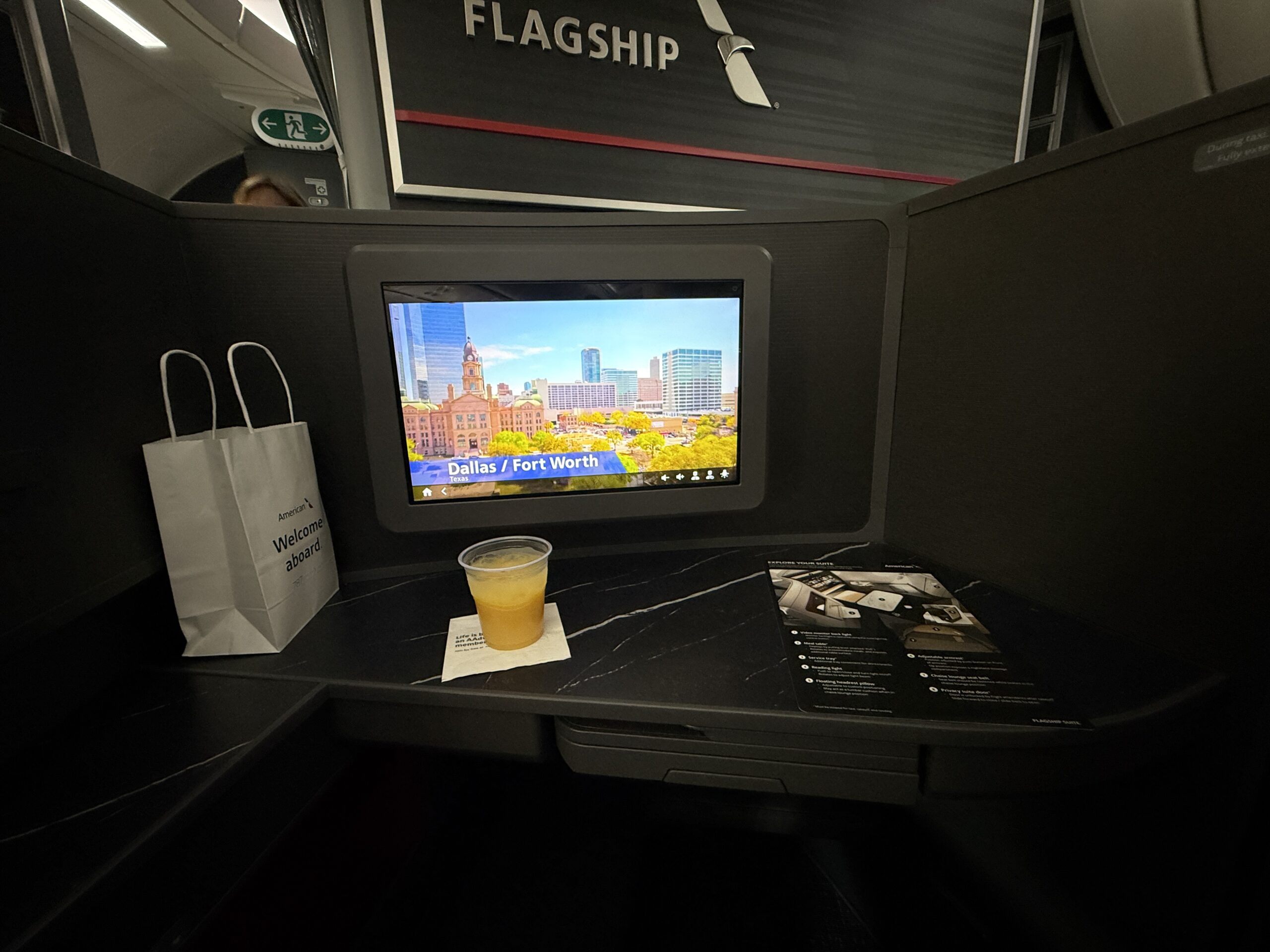
Photo: Courtesy of Chris Sloan
There is an impressive 1 terabyte of entertainment content available, although only “Interstellar” is offered in 4K. Features include a Watch Party mode that allows you to sync with a friend elsewhere on the plane, as well as a “Finish Before Landing” suggestion tool that takes into account the remaining flight time. Additionally, a blue light filter helps reduce eye strain during night flights.
A touchscreen remote control is located in the side console, but it does not replicate the screen or offer second-display capability. Bluetooth pairing worked eventually, although it required some effort. I had to disable Bluetooth on other devices and re-pair several times before it maintained a connection.

Photo: Courtesy of Chris Sloan
The Viasat Ka-band Wi-Fi service was available from gate to gate, but its connectivity was inconsistent. Download speeds reached up to 26.6 Mbps, with an upload speed of 1 Mbps; however, the signal occasionally cut out. This performance is better than the unreliable Panasonic system that is still found on much of American Airlines’ fleet, but it’s not ideal.
Wi-Fi access costs $20 per flight or $49 per month for a single device (which I use). Fortunately, starting in January 2026, free Wi-Fi will be available for AAdvantage members.
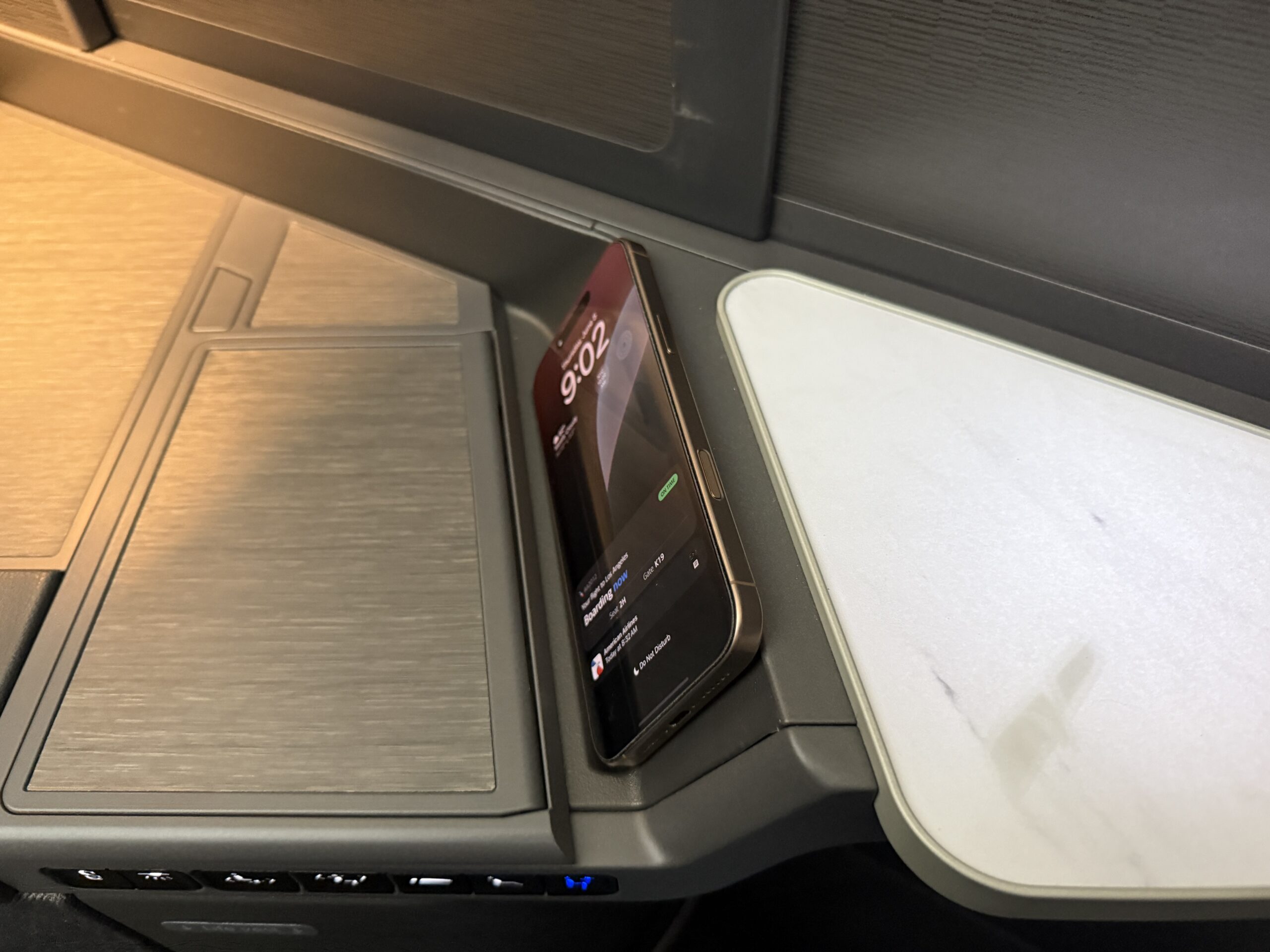
Photo: Courtesy of Chris Sloan
Additionally, each seat is equipped with a wireless charging pad, a USB-A port, two USB-C ports, and a standard AC outlet.
Service & Crew
There were a total of eight flight attendants on board, with four assigned to the expanded business cabin. Despite the increased workload, the crew maintained a positive, proactive, and warm attitude, which was a refreshing change from American’s reputation for inconsistency.

Photo: Courtesy of Chris Sloan
Our purser, who has 46 years of experience, set a positive tone early by joking with passengers during boarding.
Verdict
American Airlines’ new Flagship Suite represents a significant advancement in its offerings. It provides ample space, enhanced privacy, and exceptional comfort, along with a modern in-flight entertainment experience that finally meets world-class standards. The addition of a chaise lounge, improved storage, and a well-designed Premium Suite layout indicates that American is intensifying its competition in the long-haul business class market.

Photo: Courtesy of Chris Sloan
However, the debut felt somewhat incomplete without the full complement of the Flagship soft product. Elements such as an empty snack station, standard catering, and a subdued gate sendoff missed the opportunity to impress early adopters.
Nonetheless, with United’s Elevate program still grounded, American benefits from a first-mover advantage and has a genuine opportunity to enhance its premium reputation. To fully assess their progress, I will need to experience it again on the long-haul Flagship routes for which it was specifically designed.


